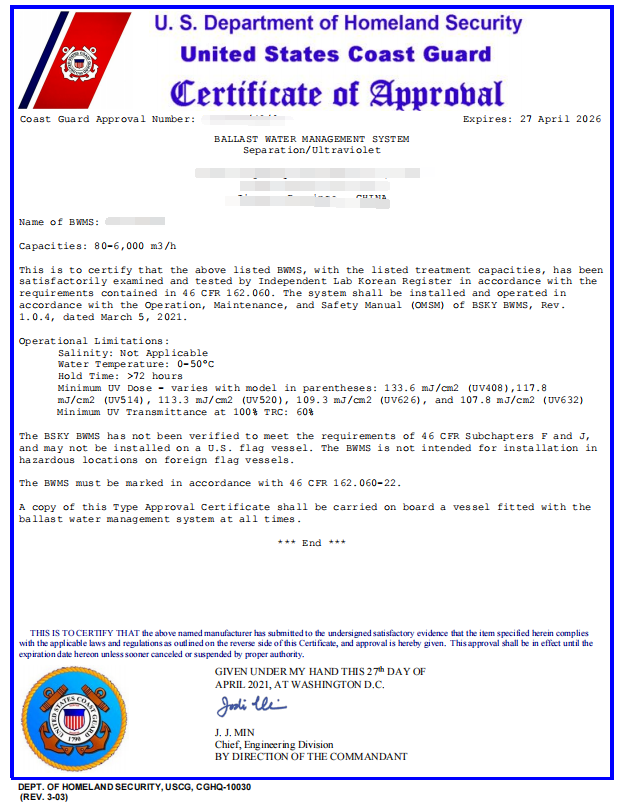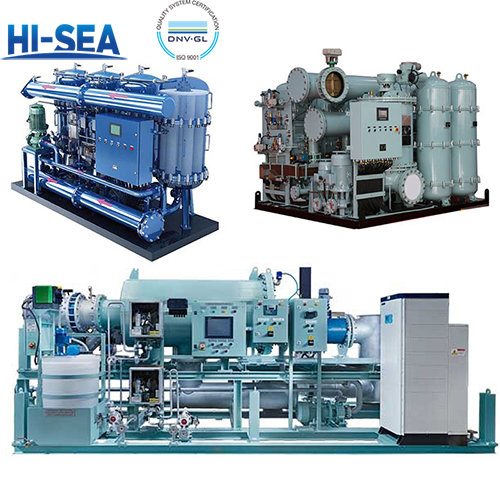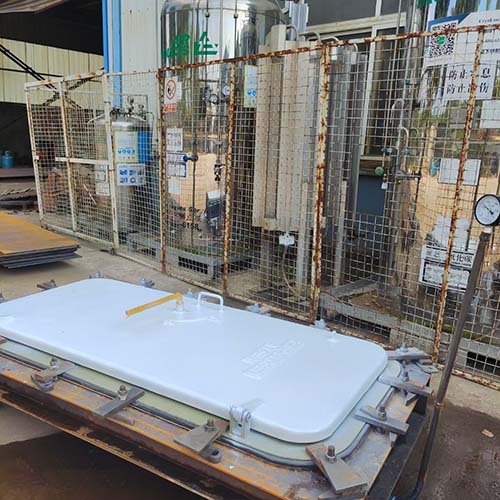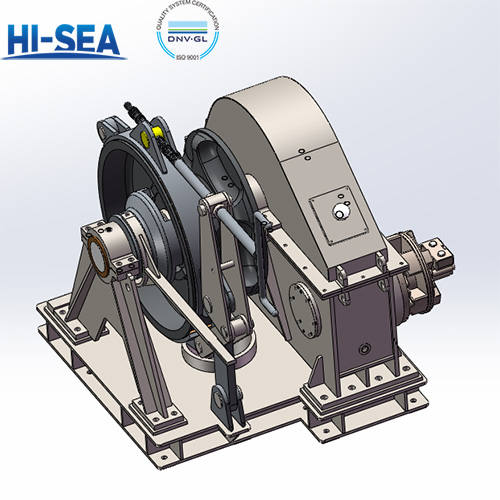
Comparison between USCG and IACS Certifications for Ballast Water Management Systems
ThedifferencesbetweentheInternationalAssociationofClassificationSocieties(IACS)certificationandtheUnitedStatesCoastGuard(USCG)typeapprovalforBallastWaterManagementSystems(BWMS)mainlylieinstandards,testingrequirements,certificationprocesses,andscopeof...
Overview
The differences between the International Association of Classification Societies (IACS) certification and the United States Coast Guard (USCG) type approval for Ballast Water Management Systems (BWMS) mainly lie in standards, testing requirements, certification processes, and scope of application, as detailed below:
1. Differences in Certification Bases and Standards
1.1 International Association of Classification Societies (IACS) Certification
IACS certification is primarily based on the International Maritime Organization (IMO)’s *Ballast Water Management Convention* and related guidelines, such as the *Ballast Water Management Systems Approval Code* (BWMS Code) and Guideline G8. Its core requirement is to ensure that BWMS meets the D-2 discharge standard, meaning the number of microorganisms in discharged ballast water must comply with the following limits:
- ≤10 viable organisms/m³ for those ≥50 μm;
- ≤10 viable organisms/mL for those 10–50 μm;
- Compliance with limits for specific indicator microbes (e.g., *Vibrio cholerae*, *E. coli*).
The IACS certification process is typically implemented by individual classification societies (e.g., DNV GL, ABS), with a focus on system design, material compliance, and compatibility with the overall ship structure.
1.2 United States Coast Guard (USCG) Certification
USCG certification is based on U.S. federal regulations (e.g., 46 CFR Part 162) and its own testing specifications, with differences from IMO standards in microbial detection methods and performance requirements:
- Definition of viable organisms: Initially, USCG required UV systems to ensure microbes are "dead" rather than "non-viable" as defined by IMO. However, after the *Vessel Incidental Discharge Act* (VIDA) took effect in 2018, USCG aligned with IMO by equating "non-reproductive" to "dead."
- Testing methods: USCG mandates independent laboratory testing, whereas IMO allows manufacturers to conduct their own tests. For example, USCG tests require 15 cycles across three salinity levels (freshwater, brackish water, seawater) and include bioavailability and toxicity trials.
- Discharge standards: USCG adopts the same microbial limits as IMO for ballast water discharge but imposes additional restrictions for specific waters (e.g., the Great Lakes).
2. Testing Processes and Certification Bodies
2.1 IACS Certification Process
- Testing entity: Manufacturers may conduct tests themselves or commission third-party laboratories; test data must be reviewed by classification societies.
- Certification cycle: Typically shorter, with some systems qualifying for rapid certification based on existing test data.
- Mutual recognition: IACS certification is widely recognized internationally, especially for vessels operating on non-U.S. routes.
2.2 USCG Certification Process
- Testing entity: Must be performed by USCG-approved independent laboratories (e.g., DHI Denmark), including shore-based, on-board, and laboratory engineering tests.
- Certification cycle: Usually 2–3 years due to time-consuming independent testing and multi-stage reviews.
- Mutual recognition: USCG does not automatically recognize IMO certifications; systems approved by IMO still require USCG testing.
3. Scope of Application and Additional Requirements
3.1 Scope of IACS Certification
- Applicable to most global waters, particularly ports of IMO member states.
- Focuses on system compatibility with ship design, such as installation space, power requirements, and material corrosion resistance.
3.2 Scope of USCG Certification
- Mandatory for vessels entering U.S. waters, including coastal areas, inland waterways, and the Great Lakes.
- Additional requirements include:
- Discharge reporting: Submission of a ballast water discharge plan 24 hours before arrival and real-time recording of treatment data.
- Equipment maintenance: Regular performance checks to ensure compliance even in extreme water conditions (e.g., high turbidity).
- Alternate Management Systems (AMS): Historically, USCG allowed vessels to use AMS for extended compliance, but this policy is being phased out, with mandatory installation of USCG-certified systems now required.
4. Technical Details and Compliance Challenges
4.1 Special Requirements for UV Systems
USCG imposes stricter performance verification for UV systems, requiring irreversible microbial DNA damage, whereas IMO only mandates non-reproductive capability. For example, USCG tests verify treatment efficiency under low-turbidity conditions, a scenario not explicitly specified by IMO.
4.2 Water Quality Adaptability
IACS certification typically covers a broad range of temperatures and salinities (e.g., 0–40°C), while USCG may require additional testing for specific regions (e.g., freshwater environments of the Great Lakes). Additionally, USCG has higher requirements for handling high total suspended solids (TSS) water, with some systems needing extra validation.
4.3 Compliance Costs and Timelines
USCG certification costs are significantly higher than IACS, including independent testing fees, on-board trials, and long-term compliance maintenance. For instance, USCG certification for a system may exceed $1 million, while IACS certification costs are typically 30–50% lower.
5. Summary and Industry Recommendations
- Vessels on international routes: Prioritize IACS certification to meet requirements of most global ports, while evaluating the need for additional USCG certification to access U.S. waters.
- Vessels on U.S. routes: Must obtain USCG certification and plan testing timelines in advance to avoid operational delays due to certification bottlenecks.
- Technical selection: For vessels operating in both international and U.S. routes, choose systems compliant with both IMO and USCG standards, and consider water quality adaptability and long-term maintenance costs.
In conclusion, the core differences between IACS and USCG certifications lie in standards, testing processes, and scope of application. Shipowners should comprehensively select certification pathways based on route requirements and regulatory mandates to ensure compliance and operational efficiency.







